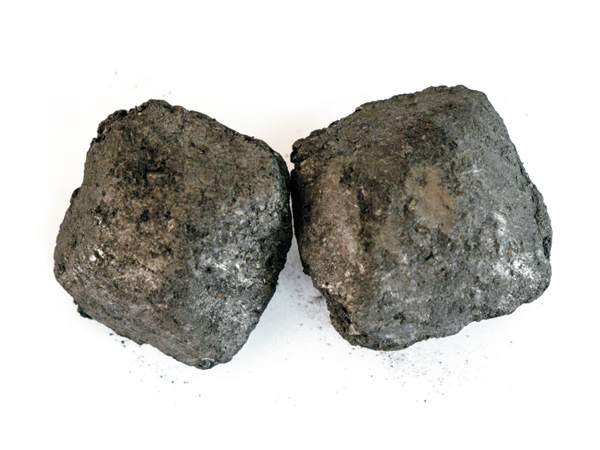The scope of application of petroleum coke is pre-baked anodes and anodized pastes commonly used in electrolytic aluminum plants, recarburizers produced in the carbon field, graphite electrodes, smelter industrial silicon and its raw materials, etc.
According to the structure and appearance of graphitized petroleum coke, petroleum coke products can be divided into four types: needle coke, sponge coke, shot wheel broken coke and powder coke:
1. Needle coke, with significant fibrous structure and chemical fiber texture, is the key to high-power and extremely high-power graphite electrodes in ironmaking. Because needle coke has strict quality standards in terms of sulfur content, ash content, evaporation and true density, there are unique regulations on the production and processing technology and raw materials of needle coke.
2. Sponge coke has strong chemical variability and low residue content. It is mainly used in the fields of smelting industrial production and carbon plants.
3. Shot wheel broken coke or spherical coke: It is spherical in shape, with a diameter of 0.6-30mm. It is generally produced from high-sulfur, high-bitumen raw oil, and can only be used as a raw material for industrial production such as power generation and concrete.
4. Powdered coke: It is produced by air-conveying coking process, with fine particles (0.1-0.4mm in diameter), high volatile content, and high thermal expansion index. It cannot be used immediately in the field of electric-grade production and carbon plants.

According to the difference in sulfur content, it can be divided into high-sulfur coke (with sulfur content above 3%) and low-sulfur coke (with sulfur content below 3%). Low-sulfur coke can be used as anodizing paste and prebaked anode for aluminum plants and graphite electrodes for smelting plants. Among them, high-quality low-sulfur coke (sulfur content less than 0.5%) can be used to produce graphite electrodes and charcoal additives. -Normal quality low-sulfur coke (less than 1.5% sulfur) is commonly used in the production of pre-baked anodes. The key to low-quality petroleum coke is used in the smelter I industry to produce silicon and to produce anodized paste. High-sulfur coke is generally used as fuel for chemical plants and power stations.
When using graphite electrodes for ironmaking or anodizing pastes (melting electric grade) for making aluminum and magnesium, in order to incorporate petroleum coke (green coke) into the regulations, it is necessary to calcinate the coke. The calcining temperature is generally around 1300°C, and the purpose is to remove the volatile content of petroleum coke as much as possible. In that way, the hydrogen content of petroleum coke re-products can be reduced, the graphitization level of oil coke can be improved, and the high-temperature compressive strength and temperature resistance of high-purity graphite electrical grades can be improved, and the conductivity of graphite electrodes can be improved. The key to sintering is used to produce graphite electrodes, carbon paste products, gold steel sand, food grade stainless steel phosphorus industrial production, metallurgical industrial production and calcium carbide, among which graphite electrodes are the most commonly used. The raw coke can be immediately used as the main material for calcium carbide without calcining, to produce carbon-carbon composite materials and boron carbide as abrasive materials. It can also be used immediately as coke for blast furnaces in metallurgical industry or as lining carbon bricks for iron-making blast furnace walls, and it can also be used as high-density coke for forging processes.
Tel: (Mr. Zhang) 13388003988
Tel: (Ms. Hu) 18340953015
Email: arther-yang@163.com
ys18340953015@163.com
Address: No. 5 Yongsheng Road, Laobian District, Yingkou City, Liaoning Province
Website: www.lnsnm.com
